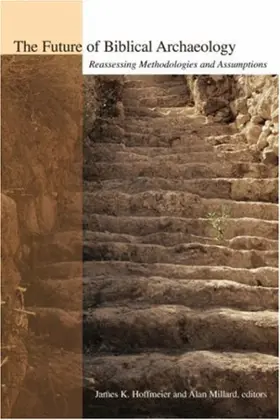

The Future of Biblical Archaeology: Reassessing Methodologies and Assumptions: The Proceedings of a Symposium August 12-14, 2001 at Trinity Internatio
Pages
404
Publisher
Eerdmans
Published
10/1/2004
ISBN-13
9780802821737
Biblical archaeology has long been a discipline in crisis. "Biblical minimalists," who believe that the Bible contains little of actual historical fact, today are challenging those who accept the historicity of Scripture. In this volume Jewish and evangelical Christian archaeologists, historians, and biblical scholars confront the minimalist critique and offer positive alternatives. Bringing a needed scientific approach to biblical archaeology, the contributors construct a new paradigm that reads the Bible critically but sympathetically. Their work covers the full range of subjects relevant to understanding the context of the Bible, including proper approaches to scriptural interpretation, recent archaeological evidence, and new studies of Near Eastern texts and inscriptions. Contributors: Richard E. Averbeck Thomas W. Davis Daniel E. Fleming William W. Hallo Richard S. Hess James K. Hoffmeier Harry A. Hoffner Jr. David Merling Alan Millard Cynthia L. Miller John M. Monson Steven M. Ortiz Benjamin Edidin Scolnic Andrew G. Vaughn David B. Weisberg Edwin Yamauchi K. Lawson Younger Jr. Randall W. Younker Ziony Zevit
Reviews
Nineteen essays by specialists cover the field of biblical archaeology and bring fresh insights to interpreting the Old Testament for the 21st century.
[Full Review]
“Minimalism” and the Context of Scripture: Reassessing Methods and Assumptions—A Review and Reply Ziony Zevit, “The Biblical Archaeology versus Syro-Palestinian Archaeology Debate in Its American Institutional and Intellectual Contexts” (3–19); Thomas W. Davis, “Theory and Method in Biblical Archaeology” (20–28); David Merling, “The Relationship between Archaeology and the Bible: Expectations and Reality” (29–42); Randall W. Younker, “Integrating Faith, the Bible and Archaeology: A Review of the ‘Andrews University Way’ of Doing Archaeolgy” (43–52); James K. Hoffmeier, “The North Sinai Archaeological Project’s Excavation at Tell el-Borg (Sinai): An Example of the New Biblical Archaeology” (53–66); Edwin Yamauchi, “Homer and Archaeology: Minimalists and Maximalists in Classical Context” (69–90); Benjamin Edidin Scolnic, “A New Working Hypothesis of the Identification of Migdol” (91–120); Steven M. Ortiz, “Deconstructing and Reconstructing the United Monarchy: House of David or Tent of David: Current Trends in Iron Age Chronology” (121–47); Alan Millard, “Amorites and Israelites: Invisible Invaders: Modern Expectation and Ancient Reality” (148–60); William H. Hallo, “Sumer and the Bible: A Matter of Proportion” (163–75); Harry A. Hoffner, “Ancient Israel’s Literary Heritage Compared with Hittite Textual Data” (176–92); Daniel E.
[Full Review]
The volume publishes the proceedings of a symposium held at Trinity International University August 12�14, 2001, Nineteen papers are organized under four subheadings. The first five deal with �Biblical Archaeol ogy: The Recent Debate and Future Prospects.� Included are �The Biblical Ar chaeology versus Syro-Palestinian Archaeology Debate in Its American Institutional and Intellectual Contexts (Z. Zevit); �Theory and Method in Biblical Archaeology� (T. W. Davis); �The Relationship between Archaeology and the Bible: Expectations and Reality� (D. Merling); �Integrating Faith, the Bible, and Archaeology: A Review of the �Andrews Un iversity Way� of Doing Archaeology� (R. W. Younker); and �The North Sinai Archae ological Project�s Excavations at Tell el-Borg (Sinai): An Example of the �New� Bib lical Archaeology?� (J. K. Hoffmeier). The next four appear under the rubric �Archaeology: Approaches and Applications�: �Homer and Archaeology: Minimalists and Maximalists in Classical Context (E. Yamauchi); �A New Working Hypothesis for the Identification of Migdol� (B. E. Scolnic); �Deconstructing and Reconstructing the United Monarchy: House of David or Tent of David (Current Trends in Iron Age Chronology)� (S. M. Ortiz); and �Amorites and Israelites: Invisible Invaders�Modern Exp ectation and Ancient Reality� (A. Millard). Six more explore the topic �Using Texts in Biblical Archaeology.� These include �Sumer and the Bible: A Matter of Proportion� (W. W. Hallo); �Ancient Israel�s Literary Heritage Compared with Hittite Textual Data� (H. A. Hoffner Jr.
[Full Review]

